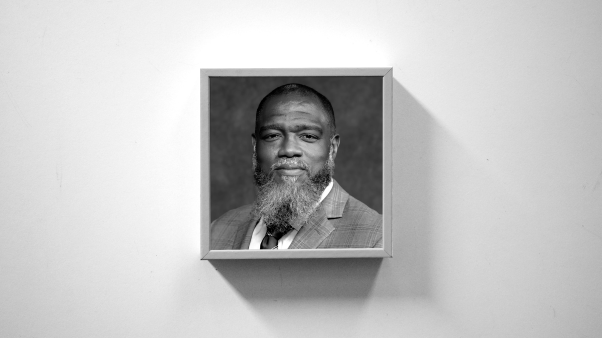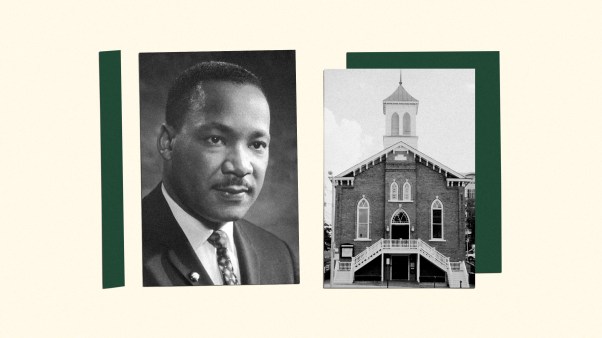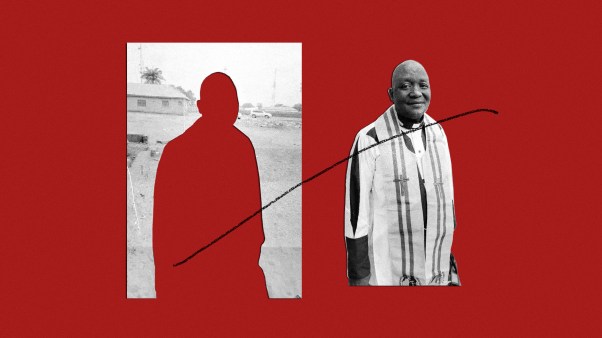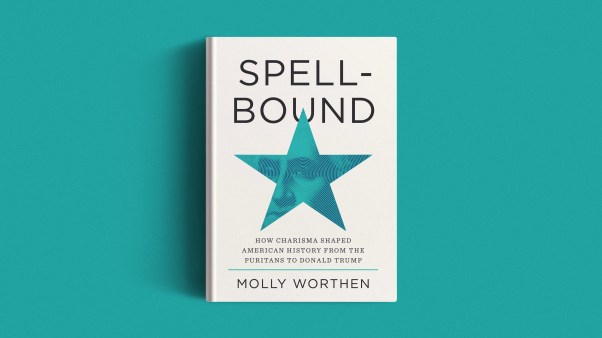The mod Christ in Jesus Christ Superstar sings the plaintive query, “Why must I die?” Although the rock-opera Jesus is not seriously cast as the divine Son of God, he does seem to be cast as the son of man, a kind of man for all men. It is as though he is seeking a universal answer to humanity’s common question.
Lewis Mumford in his best-seller The Myth of the Machine: The Pentagon of Power says that our culture is death-oriented. Taken alone, his view may seem unduly negative. But when the entire contemporary scene is considered, Mumford’s point is well taken. Let’s consider an instance or two.
The two principal characters in Evelyn Waugh’s The Loved Ones are named Miss Thanatogenos (death-kind) and Mr. Joyboy (a cosmetic talent in the world of funeral-directing). The story is a saccharine and ghoulish satire on the “American way of death.” Yet despite its morbid subject matter, only a few years ago it reigned over the best-sellers for an amazing period of time.
A current painting shows the skyline of Manhattan presiding over a graveyard; the lines and forms of the distant skyscrapers are duplicated in the gravestones. Beneath a print of the painting are the words “Megalopolis to Necropolis?”
The somber sardonicism of artistic products like these, coupled with a strange, new, cultural affair with violence, leads us to affirm Lewis Mumford’s view. The Romans and other ancients were obsessed with gladiators, public executions, and other forms of death spectacle. But in a different way, we too live with a death orientation, so much so that it scarcely seems morbid to speak about it. Nearly every day we hear war casualty reports, holiday traffic statistics, starvation figures from the world’s hunger spots, and other grim tallies of death.
Living to a ripe old age is far more certain than it was a hundred years ago. Infant and child mortality rates are so low that what Rousseau wrote in Emile seems hard to believe: “Of all the children who are born, scarcely one-half reach adolescence, and it is very likely that your pupil will not live to be a man.”
But the promises of science and its gifts of a lengthened future have not diminished our cultural death-soak. Life-insurance advertising nettles us with insecurity. So do reports of the nuclear experiments of the Peking regime. As a periodic addition to the CBS News there is a commentary under the title question: “Can the World Be Saved?” The earth (as photographed from the moon) is shown in the stranglehold of a monstrous hand. Then comes a report on mercury in swordfish, pesticides in wildlife, harmful chemicals in food, sewage in rivers, or whatever the day’s grim topic may be.
Lewis Mumford speaks of a strange new force that he calls the cult of anti-life:
The heroes of this cult, from the Marquis de Sade to Celine and Jean Genet, have elevated sadism, perversion, pornography, madness, and self-destruction into the ultimate expressions of both life and art. On their negative scale of values, there is no moral limit to the forces of anti-life. Thus in practical effect, this cult gives countenance to the infamous military plans now in readiness for total extermination [The Myth of the Machine, Harcourt, 1970, p. 261].
This “readiness for extermination” is an unavoidable reminder of the insecurity of our planet. The black-and-orange civil-defense signs are familiar sights in the alleys of human commerce. Joseph Sittler has pictured our nuclear awareness as an ever-present, semi-submerged panic:
The substance is this: annihilating power is in nervous and passionate hands. The stuff is really there to incinerate the earth—and the certainty that it will not be used is not there.
Nor have we anodyne to hush it up or power to run away from it. We can go skiing with it, trot off to Bermuda with it, push it down under accelerated occupation with the daily round, pour bourbon over it, or say our prayers—each accounting to his tactic and disposition. But it goes along, survives, talks back [“The Care of the Earth” in Sermons to Intellectuals, edited by F. H. Littell, Macmillan, 1963, p. 19].
Although this vagrant nihilism may wander away from us in our happier moments, it always moves back to menace our long-range security.
Rather than driving out the demons of death-fear, prosperity seems to invite them. In the essay “Is Life Worth Saving?” William James pointed out that periods of prosperity have always been the enemies of optimism, whereas need and struggle have always engendered talk of ultimacy and hope. It was the Jews of Solomon’s prosperous reign who were the pessimists, not the Jews of the Exile, whose writings radiate with hope and Messianism.
In a book entitled Man’s Concern With Death, Arnold Toynbee lists eight ways in which men attempt to reconcile themselves to the fact of death. Of these eight, I would like to mention four—the first two because they seem so relevant a commentary on current social behavior and the last two because they seem so elemental to our hope of dealing with the death orientation of our society.
Toynbee says that one response to the death-fear is hedonism, the “eat-drink-and-be-merry-for-tomorrow-you-die” philosophy. This outlook has often been observed in soldiers just before they were sent to the front.
Nevil Shute in On the Beach pictured Australians “living it up” as they faced extermination by creeping hands of radiation resulting from the previous nuclear war. The fear of death led the Australians not to sobriety but to moral abandon. Some sociologists have suggested that the impending threat of global annihilation is an underlying cause of much of the current moral looseness.
Compassion Fatigue
When you consider all of the human suffering—at home and abroad—to which men of good will have tried to respond during the past quarter century, it is not very surprising that some of us are beginning to display symptoms of compassion fatigue.
Among the external symptoms, two in particular are noteworthy.
The first is a tendency to curtail contributions to worthy causes. You find yourself saying no to people who ask you to give money or time to help others.
The second is a growing readiness to accept any explanation of human misery which implies that the poor and oppressed have no one to blame but themselves. You don’t have to worry about how human beings can live on $50 a month in public assistance if you can believe that everyone on the welfare rolls is a deadbeat who’s too lazy to work …
The only real cure for compassion fatigue is the one prescribed by the Bible. When you feel your wellsprings of mercy drying up, turn for refreshment to the source of all love.
“Love comes from God,” says the First Epistle of John. It goes on to say that we are able to love each other only because the spirit of God acts in us and through us, whether we know it or not.
And therein lies the great purpose of prayer. It is not a gimmick whereby men wheedle favors from a capricious deity, but a channel whereby the all-encompassing love of a gracious God may pour into human hearts, washing away their fatigue, renewing their capacity to care.—From the forthcoming book Haircuts and Holiness by Louis Cassels; scheduled for publication March 13, 1972, by Abingdon Press.
Toynbee’s second category of man’s response to the prospect of death is pessimism, the most extreme expression of which is death by suicide. Strangely, it seems not to be the great periods of human depression that produce the most suicides (though the crash of Wall Street might be taken as a substantive contradiction of this) but rather the periods of prosperity. Suicide was not prevalent at Auschwitz, according to Viktor Frankl; even the hopeless dreamed of rescue. But in these affluent days, $50,000-a-year men in utter hopelessness drive their cars into freeway abutments or jump from limestone gargoyles in Manhattan.
Toynbee’s last two suggestions about how humans encounter and deal with death are ready-made for the evangelical minister as he deals with this cultural death orientation. He suggests that the beliefs in the “resurrection of the body” and the “immortality of the soul” are two human attempts to deal victoriously with death.
It is almost irony that pulpits have ceased to talk about immortality and resurrection in a day when men are searching for every possible shred of hope. Numerous Bible passages teach immortality (e.g., 2 Tim. 1:10; John 8:51; 1 Cor. 15:54), and many more teach the resurrection of Christ (Matt. 28; Mark 16; Luke 24) and the resurrection of the dead in Christ (John 11:25; 1 Thess. 4:17; John 6:40, and Acts 24:15). Among the things that Christian ministers can do to make their ministry more relevant to this age are these:
1. They may remind those to whom they minister that death is inevitable. The philosopher Heidegger said that to accept the “finitude” of death is the only way to live authentically. Sermons should remind us consistently that life is fragile at best: this is the point of the Parable of the Rich Fool (Luke 12), and of James’s haunting question and answer: “What is your life? It is even a vapor, that appeareth for a little time and then vanisheth away” (4:14).
2. They need to say that biological death is not the Great Finitude. That description applies instead to the judgment of Christ, before which we shall all stand (Rom. 14:10).
3. To those who feel a pall of fear over our world, God’s spokesmen may say with confidence that the Omega of history is not an intolerant level of strontium 90 in the dairy case. History’s Omega is history’s Lord (Rev. 1:18), and those who know Christ need not fear a historical outcome beyond God’s management.
4. Finally, Christian ministers need to set forth resurrection as firmly as Paul did in First Corinthians. For it is still true that “if Christ be not raised, then our faith is vain” (1 Cor. 15:17). To those possessed of death-fear, let it be said that at his Second Coming “the dead in Christ shall rise first” (1 Thess. 4:16).
One of the great words in Christianity is hope, and hope may and must be set over against despair and death. Christ offers life beyond threat. To the current prophets of a nihilism that has been conceived in prosperity and born in abundance, let us offer the Lord of the Lampstands (Rev. 1:18): “I am he that liveth, and was dead; and behold, I am alive forevermore, Amen; and have the keys of hell and of death.”
Calvin Miller is pastor of Westside Baptist Church in Omaha, Nebraska. He received the B.S. degree from Oklahoma Baptist University and the M.Div. from Midwestern Baptist Theological Seminary. He has written four books.










